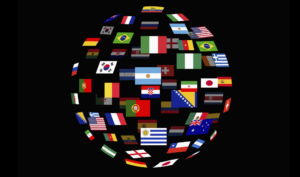
How Leaders Can Incorporate Narrative Intelligence for Effective DEI Efforts
My life’s work is rooted in the power of story. Growing up as an outsider of the dominant cultural groups I was around, I’ve witnessed

My life’s work is rooted in the power of story. Growing up as an outsider of the dominant cultural groups I was around, I’ve witnessed

Imagine you discover an ideal job opportunity. You have the skills, drive, and vision to excel in this role. However, barriers invisible to others are

There’s nothing like having skin in the game to keep you focused, motivated, and engaged. Just ask any business owner. This logic extends to employees,

Artificial intelligence. Some leaders love it. Some have accepted it. Others still have serious questions about it. But whatever your opinion may be, there is

Recently, one of the soldiers in my reserve unit decided it was time to hang up the uniform and transition to the civilian world. During

With so many interesting new HR tools available lately, are you wondering if more modern HR analytics could improve your workforce planning capabilities? In a

Are you disturbed by news about organizations backtracking on workplace diversity and inclusion commitments? I certainly am. For example, a recent Wall Street Journal article

If pay transparency isn’t yet a hot topic in your organization, it soon will be. Recently, several states have passed pay transparency laws, and others

No question about it. Strong internal communication is critical to a strong business. But it’s not easy — especially when workplace dynamics are constantly fluctuating.

Is your organization striving to create a more inclusive work culture? If so, you’re not alone. Many HR and business leaders are committed to improving

When the pandemic arrived in 2020, everyone’s definition of work changed in a heartbeat. Most people headed home, leaving their offices, cubicles, water coolers, and

In today’s diverse, dynamic work world, employers increasingly recognize the transformative power of diversity, equity, and inclusion. Still, concerns often arise about the cost of

We all share a deep desire for belonging. From Abraham Maslow to Brené Brown, experts agree that this “indescribable feeling of being welcomed” is a

Are you involved in your organization’s talent calibration process? Think back to the last session you attended with executives. Did they mostly stay quiet? Perhaps

In recent years, diversity, equity, and inclusion (DEI) has become a red-hot topic among employers and human resources professionals who plan and manage these initiatives.

Diversity, Equity, and Inclusion (DEI) is by definition a people-centered business endeavor. So at first glance, the phrase “people-first DEI” may seem redundant. But that’s

These days, many people are dealing with stress from all kinds of personal financial concerns. This can harm workforce wellbeing — especially when people aren’t

Sponsored by ADP The WOTC (Work Opportunity Tax Credit) offers businesses a tremendous opportunity for tax credits based on hiring. But for organizations to participate

In the past, many employers dismissed the idea of building an international workforce. Those who could attract local talent considered it unnecessary. Others didn’t have

In recent years, I’ve been encouraged by a groundswell of employers that are choosing to embrace “culture-add” people practices. In fact, several months ago, I

The working world has spoken: Employees want to be part of organizations that value and support diversity, equity and inclusion (DEI). But they won’t accept

If your diversity strategy relies on presentations and workshops, it’s probably not working as it should. In addition to diversity programs showing minimal improvement in

Sometimes research emerges that sets a new high-water mark on a troubling trend — and it’s well worth paying attention to. That’s the case with

Graduation season is here, and many recent or soon-to-be graduates are about to enter the workforce. In fact, it is estimated that companies plan to

Pandemic-related mental health is undoubtedly top-of-mind. In addition, there tends to be an uptick in dialog about mental health this time of year because May